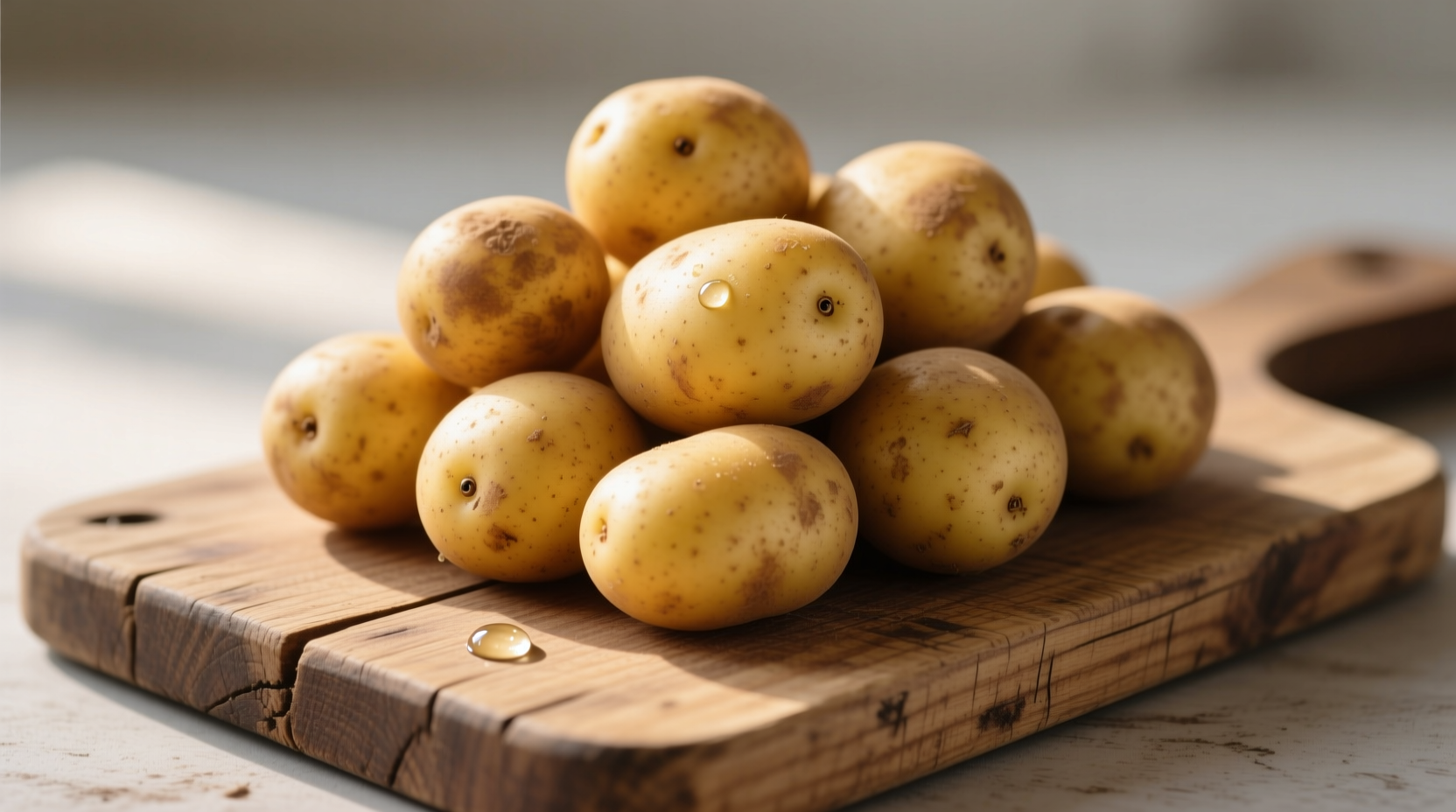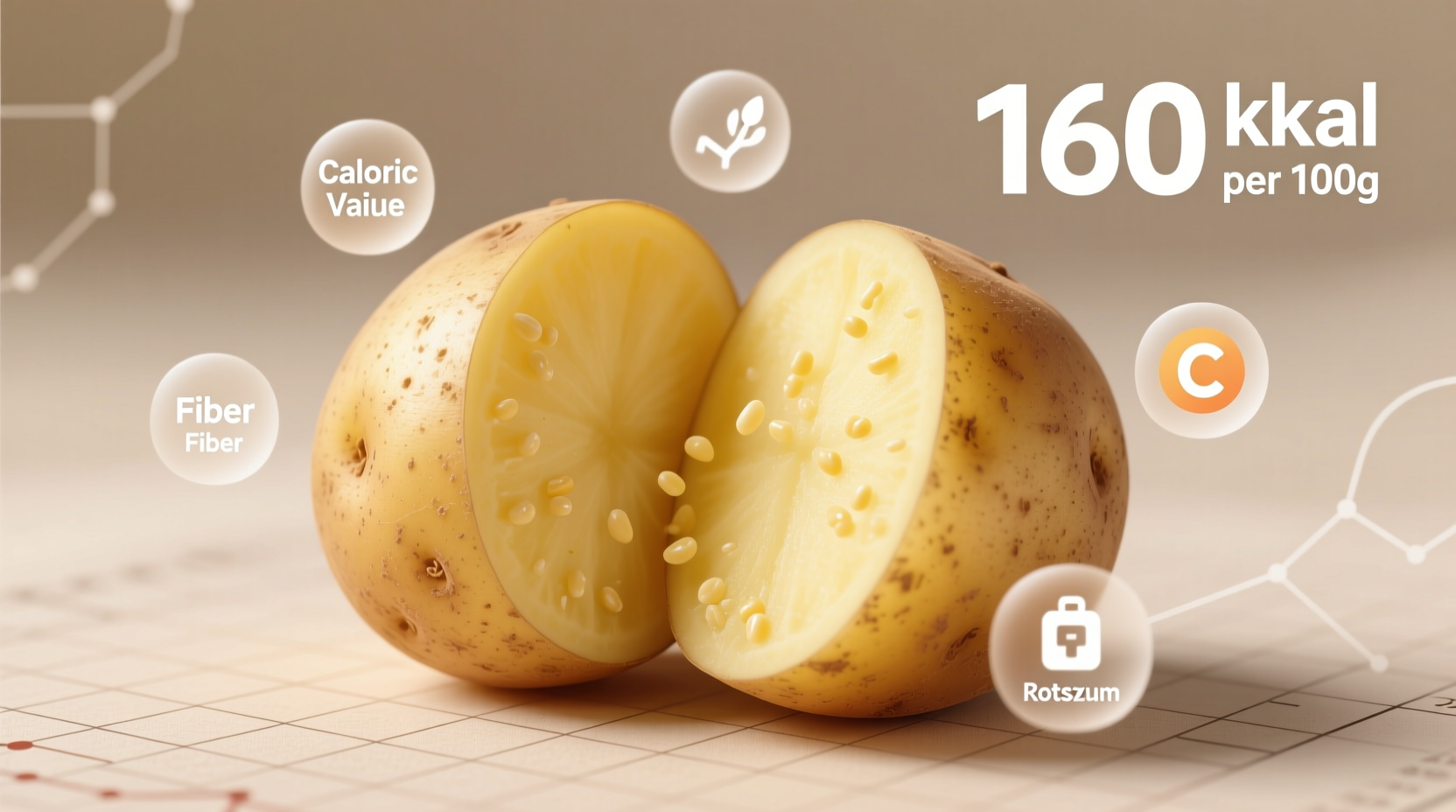When tracking your daily nutrition, understanding the exact calorie content of staple foods like gold potatoes is essential. Many people mistakenly assume all potatoes are high-calorie foods, but gold potatoes (specifically Yukon Gold variety) offer a balanced nutritional profile that fits well within various dietary plans. Let's explore exactly what makes these golden-hued tubers a smart choice for health-conscious eaters.
What Are Gold Potatoes?
Gold potatoes, most commonly referring to the Yukon Gold variety developed in Canada, feature a smooth, slightly waxy texture and buttery yellow flesh. Unlike russet potatoes with their thick brown skin, gold potatoes have thin, light tan skin that's perfectly edible. Their naturally buttery flavor means you often need less added fat when preparing them, making them an excellent choice for calorie-conscious cooking.

Nutritional Profile of Gold Potatoes
Understanding the complete nutritional picture helps you make informed dietary choices. Gold potatoes provide more than just calories—they deliver valuable nutrients that contribute to overall health.
| Nutrient | Per 150g Medium Potato | % Daily Value |
|---|---|---|
| Calories | 110 | 5% |
| Carbohydrates | 26g | 9% |
| Dietary Fiber | 2.5g | 10% |
| Protein | 3g | 6% |
| Potassium | 750mg | 22% |
| Vitamin C | 27mg | 30% |
| Vitamin B6 | 0.4mg | 20% |
Data sourced from USDA FoodData Central (Food Composition Database, Accession No. FDC170260), the official U.S. government nutritional database.
How Preparation Methods Affect Calorie Content
The way you prepare gold potatoes significantly impacts their final calorie count. Understanding these variations helps you make smarter choices based on your dietary goals:
- Boiled (with skin): 110 calories per medium potato - preserves nutrients and requires no added fat
- Baked: 120 calories per medium potato - slightly higher due to water loss during cooking
- Mashed (with milk only): 140 calories - additional calories from dairy
- Roasted with 1 tsp olive oil: 160 calories - healthy fats add calories but improve nutrient absorption
- Fried: 250+ calories - substantially higher due to oil absorption
According to research published by the Harvard T.H. Chan School of Public Health, boiling or steaming potatoes with their skin intact preserves the highest amount of nutrients while keeping calorie counts lowest. The skin contains nearly half the fiber content, making it nutritionally valuable to leave intact.
Gold Potatoes vs. Other Varieties: Calorie Comparison
Not all potatoes are nutritionally identical. Here's how gold potatoes compare to other common varieties:
| Potato Type | Calories (150g) | Carbohydrates | Fiber | Best For |
|---|---|---|---|---|
| Gold (Yukon Gold) | 110 | 26g | 2.5g | Mashing, roasting, salads |
| Russet | 120 | 29g | 2.1g | Baking, frying |
| Red | 100 | 23g | 2.0g | Boiling, salads |
| Sweet Potato | 130 | 30g | 3.0g | Baking, roasting |
| Fingerling | 110 | 25g | 2.3g | Roasting, grilling |
This comparison shows that gold potatoes sit comfortably in the middle range for calories among common potato varieties. While sweet potatoes contain more calories, they also provide significantly more vitamin A. Gold potatoes offer a balanced nutritional profile with their notable potassium and vitamin C content.
Practical Tips for Including Gold Potatoes in Your Diet
Gold potatoes can be part of a healthy eating pattern when prepared thoughtfully. Here are evidence-based strategies:
Smart Portion Control
Registered dietitians recommend treating potatoes as a carbohydrate source rather than a vegetable in meal planning. A standard serving is one medium potato (about 150g), which contains approximately 15g of carbohydrates - equivalent to one slice of bread. Pair with lean protein and non-starchy vegetables for balanced meals.
Healthiest Cooking Methods
Maximize nutritional value while minimizing added calories with these preparation techniques:
- Steam instead of boil to preserve water-soluble vitamins
- Leave skins on for added fiber and nutrients
- Use herbs instead of butter for flavor without excess calories
- Cool before eating to increase resistant starch content (studies show this can reduce the glycemic impact)
Dietary Considerations
For those managing blood sugar levels, gold potatoes have a moderate glycemic index (around 62). Pairing them with protein, healthy fats, and fiber-rich vegetables can help moderate blood sugar response. The American Diabetes Association recommends including potatoes in moderation as part of a balanced meal plan.
Common Questions About Gold Potato Nutrition
Here are answers to frequently asked questions about gold potato calories and nutrition:











 浙公网安备
33010002000092号
浙公网安备
33010002000092号 浙B2-20120091-4
浙B2-20120091-4